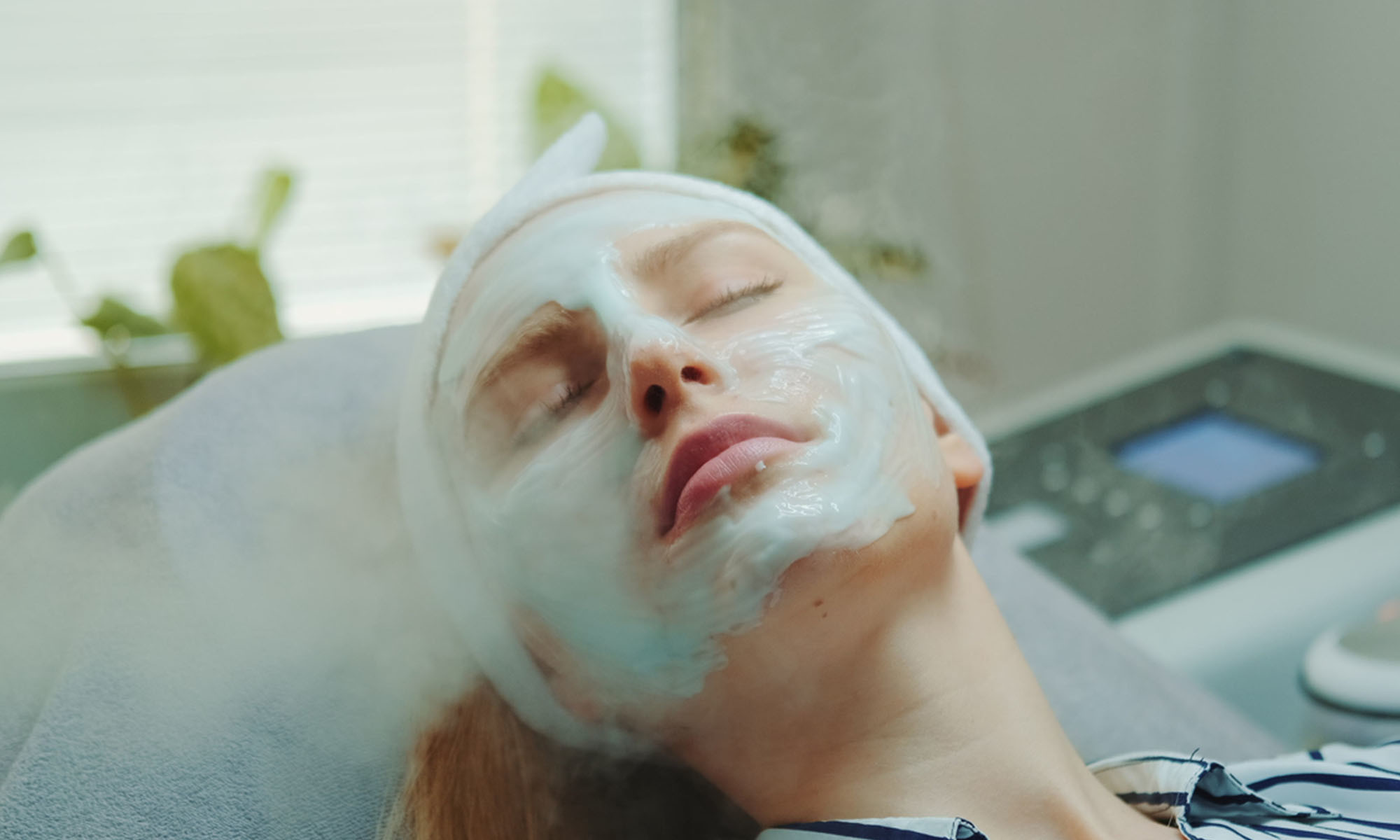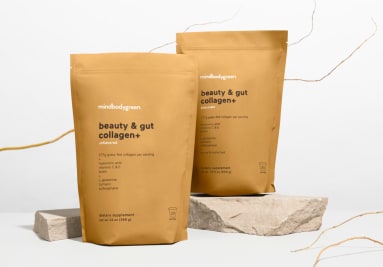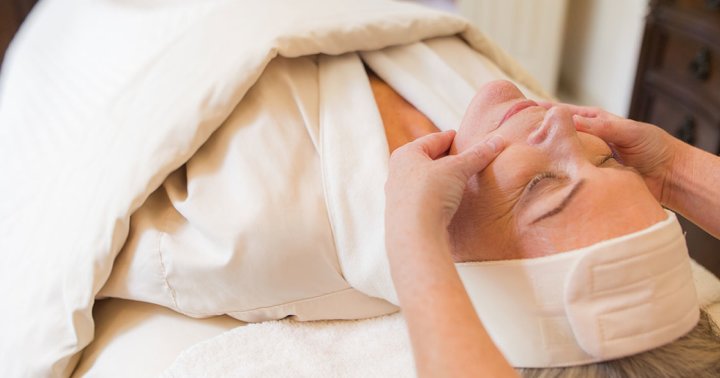Do This Once A Week For Brighter Skin & Less Blackheads, Derms Say
Just make sure to do it correctly.


mbg Beauty & Wellness Editor
mbg Beauty & Wellness Editor
Jamie Schneider is the Beauty & Wellness Editor at mindbodygreen, covering beauty and wellness. She has a B.A. in Organizational Studies and English from the University of Michigan, and her work has appeared in Coveteur, The Chill Times, and Wyld Skincare.
Image by Maksym Panchuk / iStock December 20, 2022 Our editors have independently chosen the products listed on this page. If you purchase something mentioned in this article, we may Skin care does not need to be fancy—you can absolutely get by with a simple cleanse, treat, moisturize regimen. No need to opt for all the bells and whistles, but that’s not to say those additions are totally superfluous. Some people love to indulge in tools, masks, and devices that give the skin a little something extra, and we’d certainly toss facial steamers into that camp. Now, do you need a facial steamer? No, not really. But they can be a worthy investment for some—and when used correctly (correctly being the operative word here), they can provide a host of benefits. Allow the experts to explain. 
Advertisement
This ad is displayed using third party content and we do not control its accessibility features.
What is facial steaming?
“Facial steaming is the process of applying hot water vapor to your face for a short period,” explains board-certified dermatologist Ife J. Rodney, M.D., founder of Eternal Dermatology. You can do this a few ways—facial steaming devices, saunas, steamy showers, et al.—but the point is to apply some degree of heat to your skin in order to reap the benefits.
Benefits.
If you’ve ever received a professional facial, you may have noticed your esthetician using a steamer post-cleanse to open up the pores and make it easier for them to perform extractions—but facial steaming has benefits beyond popping blackheads (which you should never, ever do at home, anyway). Take a peek below:
Advertisement
This ad is displayed using third party content and we do not control its accessibility features.
First and foremost, the warmth from the steam opens up the pores and loosens trapped dirt, bacteria, and sebum. (Again, that’s why many facialists steam pre-extractions.) But dissolving all the gunk within your pores before, say, an exfoliating mask or scrub may help the product work even better.
“Facial steaming may provide a hydrating effect with water vapor, which may keep your skin moisturized, plumper, and supple,” says Rodney. See, as the heat opens up your pores, those water vapor molecules can shimmy their way through the dermis and plump your skin with hydration.
Advertisement
This ad is displayed using third party content and we do not control its accessibility features.
“Facial steaming also dilates your skin blood vessels which promotes healthy circulation to the skin,” says board-certified dermatologist Kim Nichols, M.D., founder of NicholsMD of Greenwich, and stimulating blood flow often leads to a more radiant complexion. Not to mention, that extra hydration can also lead to a brighter glow: “When your skin lacks water, it appears dull with an uneven skin tone,” Nicols reminds us.
4.
Boost skin care products.
Some people use facial steaming to improve the potency of their subsequent skin care products, says Rodney. “It loosens the dirt and opens your pores, so serums, toners, and eye creams work better,” she notes.
Advertisement
This ad is displayed using third party content and we do not control its accessibility features.
“Utilizing a facial steamer softens the skin and dead cells on the epidermis,” Nichols says, and breaking up dead skin cells can also help subsequent skin care products work better. After all, that pillowy hyaluronic acid serum can’t do its job effectively with a wall of excess dead skin in the way.
A cloud of warm mist over your face just sounds soothing, no? While you shouldn’t steam your face every single day (more on that in a bit), many people opt for a steamer whenever they crave an at-home spay day. Sometimes the sensorial experience alone is reason enough to snag a portable device.
You could even add a few drops of your favorite skin-safe essential oil to really encourage a spa-grade experience. Although, if you’re sensitive to essential oils, you might want to stick with plain water.
Advertisement
This ad is displayed using third party content and we do not control its accessibility features.
Side effects.
Yes, facial steamers have their fair share of benefits—but they’re not without their drawbacks.
For instance, while steaming can effectively rehydrate the skin, it can also cause dehydration if you do it too often. “Just like over-exfoliating, over-steaming may trigger a process called trans-epidermal water loss,” says Nicohls. “This is when water passes from the dermis through the epidermis and evaporates from the skin’s surface.”
Over-steaming can also strip the skin of its natural oils, which can leave the skin so parched that it over-produces even more oil to compensate.
And dilating blood vessels can promote circulation and lead to a brighter skin tone, but, again, you don’t want to over-do it. “Applying too much heat can damage the skin, possibly causing hyperpigmentation. You'll lose the benefits if you’re not careful or it’s too hot,” Rodney warns. Frequently flushing your facial skin can even lead to broken capillaries or a ruddy complexion over time, Rachel Nazarian, M.D., of Schweiger Dermatology Group in NYC, previously told mbg.
Finally, steaming is not for everyone—some people just can’t tolerate the heat, even sparingly. “If you have conditions like eczema, rosacea, or melasma, it can exacerbate them, so steer clear of steaming,” Rodney notes, since that heat can trigger inflammation. (If you have sensitive skin in general, you might also want to avoid steamers.)
“You should also steer clear of steaming as a solution if you have acne. The skin is already inflamed, and applying heat will make things worse,” she adds. Yes, steaming can prep the skin for extractions in a professional setting, but only comedones like blackheads or whiteheads. Estheticians will not touch inflamed mounds (and neither should you).
How often should you steam?
"Once a week is probably a good start," says Morgan Rabach, M.D., a board-certified dermatologist and cofounder of LM Medical in NYC.
If your skin can tolerate it, you can increase the cadence up to two times a week, but Rodney says you definitely shouldn’t steam more than that. “People of color should aim for once weekly, if at all,” she adds. “Skin of color can become hyperpigmented much more quickly from excess steaming.”
How to do it at home.
Ready to steam? Carefully (!) try one of the methods below:
The takeaway.
Facial steaming can hydrate, brighten, and soften the skin, but only if you do it correctly. Make sure to follow the expert tips above and steer clear if you have conditions like rosacea, eczema, melasma, or inflamed acne. But when used with caution and care, facial steamers can be a solid investment for a DIY facial. Of course, steaming is just the first step: Find our full at-home facial tutorial here.

 Tekef
Tekef 

































